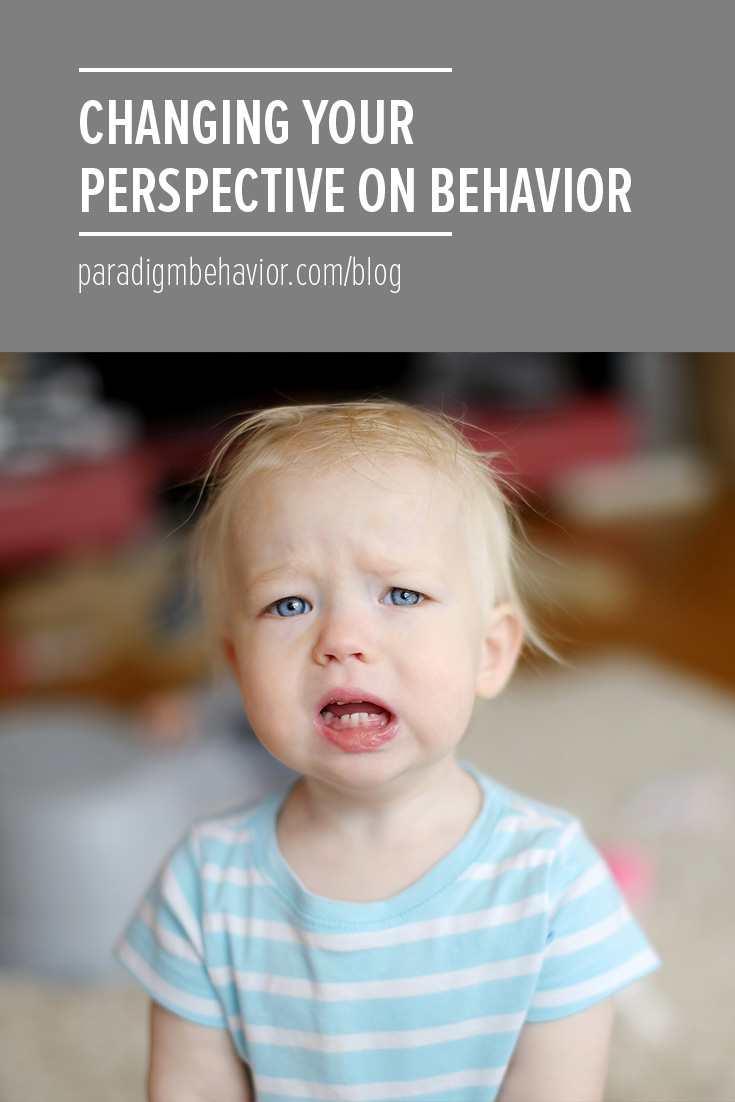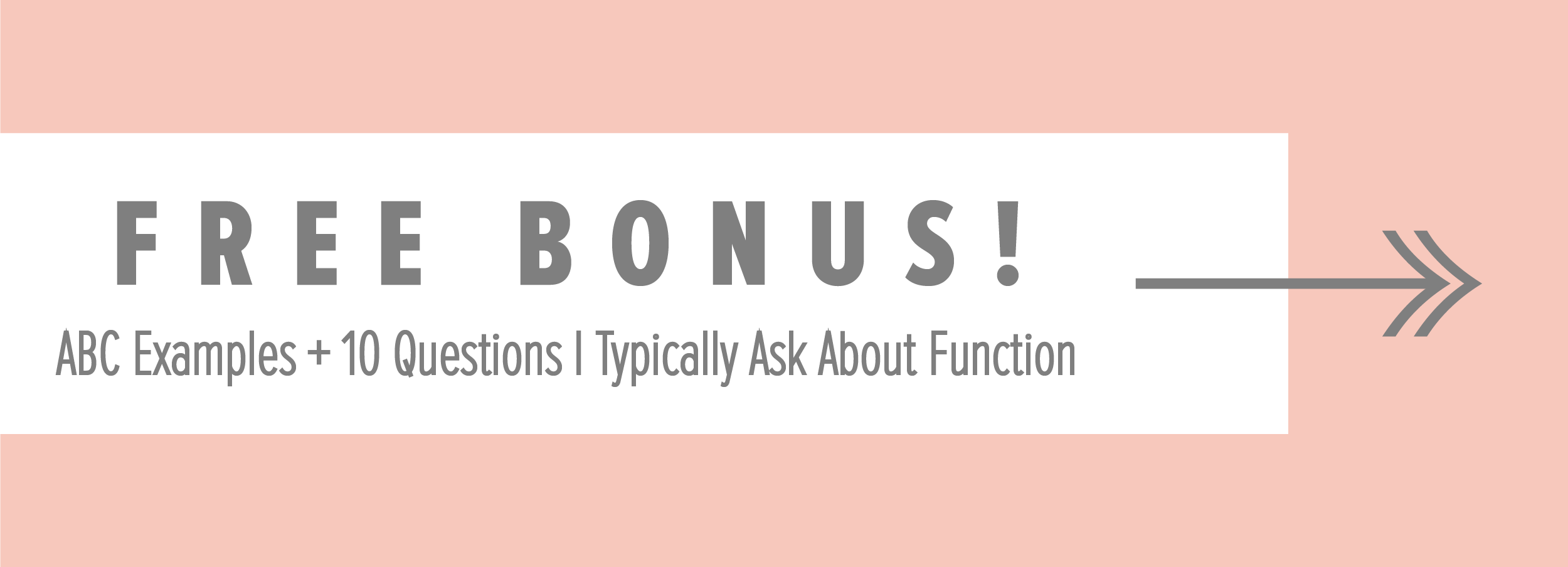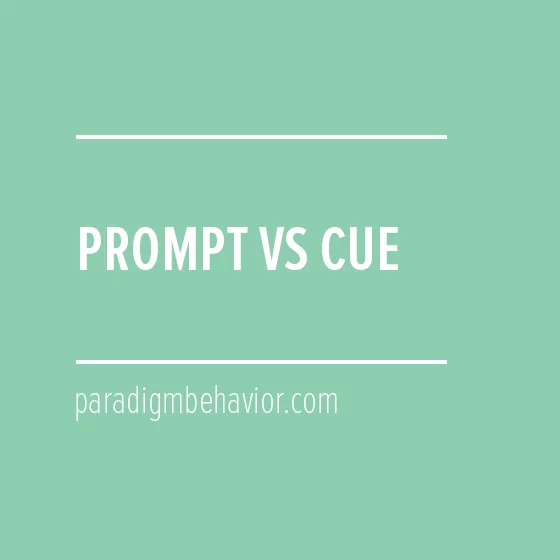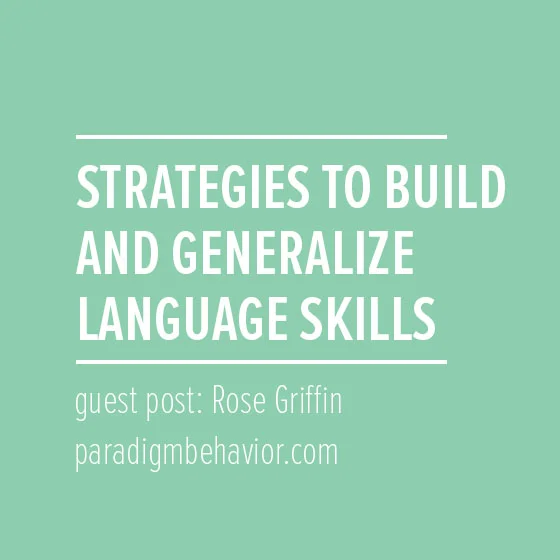Problem behaviors and figuring out how to get rid of them are the main reason why we are here. But just letting me know how often (frequency) and how severe (intensity) behaviors are is not enough information to get to the root of the problem and intervene. If you haven’t already guessed, I’m talking about functions of behavior. You can find what others say about function here and here.
Often when I’m approached with one question, I’ll respond with more questions. The reason for this is that I don’t want to give you a band-aid answer. Here’s a common example I use when explaining different functions.
Question: My daughter cries all the time, especially when we go grocery shopping. What do I do?
Band-Aid Answer: She really likes juice. Just give her juice to distract her.
So, yes. She’s distracted and content with her juice. She also stopped crying because it’s hard to cry and drink juice at the same time (this is called incompatible behaviors, but let’s not stress over technical terms right now). Before you know it, you’re checked out and on your way home. You make a note to bring juice with you every time.
However, does your daughter continue to cry during your outings? If so, juice is not the answer to your problem.
Functions of behavior has 4 categories which behavior analysts use to understand why a behavior (e.g. crying) occurs.
Crying - attention
Stop paying attention to your grocery list and play with me.
Crying - tangible
I really want those cookies while we’re here. Please and thank you in advance.
Crying - escape
It’s too cold in here. I don’t like it. Can we leave right now?
Crying - automatic
My tummy hurts. Help! Make it go away.
Notice that crying happens in all four examples and all communicate very different things. This blew my mind when it was broken down for me. So, when you ask “What do I do to keep my daughter from crying all the time?” don’t feel like you’re being interrogated. Just remember that the reason we’re asking all these questions is because the behavior analyst is listening to your concerns.
So, what can you do now to help figure out function of behavior? My best advice is to keep a journal, preferably an ABC journal (you can download in our library). In your Parent training sessions you and your behavior analyst will look at the behavior in its context, meaning “what’s going on around the behavior?”
Items in the journal involve:
Date - jot down the setting too; where did the behavior occur?
[A] Antecedent - what happened before the behavior?
[B] Behavior - the behavior you’re concerned about. Try to elaborate, if you can. Instead of crying, you could say crying at the top of her lungs, flopping + kicking the floor, or whimpering.
[C] Consequence - what happened after the behavior?
FX - This is where you can guess the function, but it’s okay to leave this part blank. The behavior analyst will often times look at the ABC chart as a whole to see if there are any patterns that would point to any of the 4 functions.
Is this a lot to take in? Don’t worry. Once you’ve seen more examples of an ABC chart, it will start to click with you and you will start to see behaviors differently. When you look at the behavior as is, it’s frustrating and there are times when you take it personally. However, when you look at the behavior as a way of communication, you can be more optimistic. After all, if we can figure out what your child is trying to communicate, we can find opportunities to teach a better way to express themselves (this is called replacement behavior).
Keeping an informal or formal journal is definitely helpful when trying to recall events around the behavior. Your behavior analysts will ask direct questions about these scenarios, and the journal will give you something on hand to reference. Also, it can be used as a log to see how often the behavior is occurring.
So, what happens after you dish all the details? The behavior analyst will analyze the information they gathered and may request to do some direct observations (this is called a functional behavior assessment). Once they can narrow down the function, they will create an intervention plan for everyone to carry out in order to decrease or eradicate the problem behavior.
To learn more about ABCs of behavior check out my Roadmap to ABA Parent Training. Here you will get a thorough training and practice with your behavior analyst on how to gather information for your ABC journal. The hands on training will give you a different perspective on behavior.
As an extra bonus, I've added 2 PDFs in the resource library:
- ABC examples for the scenario above.
- 10 questions I typically ask parents to figure out function (worksheet)













Learn the difference between fading within one prompt type vs. fading across different prompt types commonly known as prompt hierarchies.